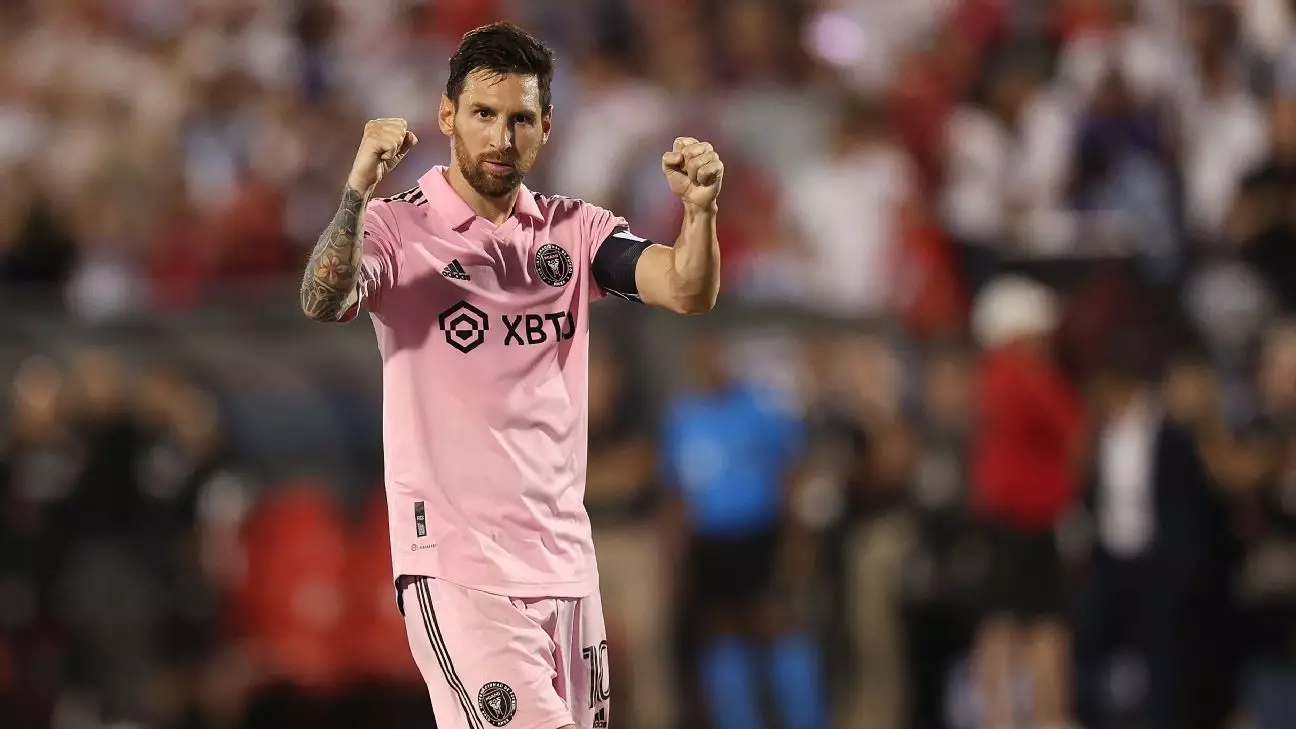Just days before a highly anticipated matchup between the Vancouver Whitecaps and Inter Miami, a wave of anxiety swept through the soccer community. Vancouver’s CEO Axel Schuster announced that Lionel Messi, Luis Suárez, and Sergio Busquets would not feature in the game—an unexpected move that raised eyebrows and ignited waves of disappointment among fans eager to witness Messi’s magic. This unusual disclosure wasn’t just a logistical update; it indicated the significance of these elite players and their potential absence in shaping matchday experiences. Teams are becoming acutely aware of the enormous draw that Messi and his teammates provide, prompting clubs to rethink how they engage with supporters and design their game-day events.
Despite the somber news, the Whitecaps rallied and committed to hosting their planned pregame festivities, which included everything from a block party to tailgates, actively attempting to mitigate fans’ disappointment. But this incident did not occur in a vacuum; teams across the league have been scrambling to alter their approach to match days featuring Messi’s Inter Miami since his arrival in Major League Soccer (MLS) in the summer of 2023. The enduring allure of Messi has transformed not just the attendance figures but also the marketing strategies employed by organizations across the league.
The Surge in Attendance Driven by Messi Mania
The ramifications of Messi’s presence have been undeniable. Although Messi may have missed certain matches, the hype surrounding Inter Miami typically results in record-breaking attendance figures. For instance, during a game against the Chicago Fire last season, the club rolled out a unique incentive plan to appease fans in the event that Messi was absent. The prospect of facing Messi has incentivized teams to move matches to larger stadiums in an attempt to accommodate the surging interest.
For example, Sporting Kansas City transitioned from their regular venue, Children’s Mercy Park, which holds about 18,000 spectators, to Arrowhead Stadium—home to more than 76,000 seats—when facing Inter Miami. Ticket prices for this matchup were elevated, yet this strategy paid off spectacularly as the game attracted a crowd of 72,610, marking the fourth-largest attendance in MLS history. Similar scenarios unfolded at other clubs as well, illustrating an expanding trend of adjusting match logistics based on Messi’s star power.
The approach to marketing games against Inter Miami has also evolved considerably. Teams are aggressively enhancing their promotional campaigns through tailored social media initiatives designed to capture the excitement surrounding Messi’s appearances. This isn’t merely about filling seats; it’s about creating a compelling narrative that entices fans to engage closer with their clubs.
Clubs like Charlotte FC and Atlanta United have taken notable strides in accommodating the influx of Miami supporters and potential new fans. Historically, some stadiums close upper sections for regular-season games, but when Messi comes to town, an opening of those sections becomes crucial to satisfy the crowd’s anticipation. Last season, Atlanta hosted an astonishing 71,635 fans for a match against Miami, a turnout that dwarfed their average attendances. The implication of these numbers suggests a remarkable shift in how clubs assess and prioritize their game-day experiences, catering to a vastly larger audience.
The staggering influence of Lionel Messi transcends mere attendance records; it resonates in the spirit and excitement brought to every match, even in his absence. Players like Griffin Dorsey from the Houston Dynamo acknowledged that the mere anticipation surrounding Messi contributes to a unique buzz that enhances the competitiveness of league matches. Messi elevates the stakes not just in terms of skill but in generating public interest and discussion.
Furthermore, MLS’s overall attendance reflected this excitement, showcasing a sharp increase in average figures across the league. Reporting an increase of more than 23,000 in average attendance, the league emphatically demonstrated Messi’s influence—elevating MLS out of the shadows and into the international spotlight it so desired. The attendance records shattered in 2024, with Inter Miami involved in six of the top ten matches, cementing Messi’s role as a transformative figure within the sport.
As Messi begins his third season in MLS, the fervor around his presence has only intensified, leaving teams to wonder about their strategy for 2025—the potential final year of his contract. Clubs recognize the urgency to extract maximum value from this unique opportunity, forming plans that capitalize on his enduring celebrity status to attract not only casual fans but dedicated soccer enthusiasts.
The evidence is conclusive: Messi’s impact on MLS cannot be overstated. His ability to draw fans and inspire excitement has fundamentally changed the landscape of American soccer, making it clear that the league will continue to evolve to meet and thrive in the wake of his stardom. As teams prepare for another season, one thing remains abundantly clear: the “Messi Effect” will reverberate through every aspect of MLS operations, setting benchmarks for future athletes entering the league.

